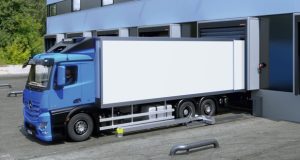IOSH 2019, the Institution of Occupational Safety and Health’s annual international conference, took place on 16-17 September at the International Convention Centre in Birmingham. Marcus Boocock, IOSH Communications Officer, reports
 “New technologies can actually help us better protect people, so we must take advantage of this.” That was a key message from Professor Vincent Ho, the outgoing President of IOSH, as he opened IOSH 2019.
“New technologies can actually help us better protect people, so we must take advantage of this.” That was a key message from Professor Vincent Ho, the outgoing President of IOSH, as he opened IOSH 2019.
The world of work is evolving at pace, said Prof Ho, much of it being led by new technologies. This brings new risks for working people which the occupational safety and health profession must respond to.
But Prof Ho urged delegates at the ICC not to be fearful of new technologies; but to embrace them and consider how they can actually help enhance the way that working people are protected.
Some of these new technologies were highlighted at the conference. One session, for example, led by researchers from the University of Nottingham looked at how virtual reality can be used to predict the behaviour of employees during emergency evacuations. As a result, this can lead to improved safety outcomes.
Dr Glyn Lawson, from the University of Nottingham’s Faculty of Engineering, told delegates their research – funded by IOSH – revealed that virtual environments increase engagement in safety and health training.
Safety during evacuations was the subject of another session at the conference, led by Professor Ed Galea of the University of Greenwich and Jim Senior, formerly of construction giant Multiplex.
This also highlighted recent IOSH-funded research, which focused on the evacuation of high-rise construction sites. Trials done by researchers on two construction sites in London, and a questionnaire sent to workers involved, revealed an issue with people not responding immediately to evacuation alarms, instead completing some tasks and wasting critical time.
Delegates had earlier heard from Martin Temple, Chief Executive of the Health and Safety Executive (HSE). His opening address looked at the current state of the safety and health profession, the big issues that need addressing and the future.
He highlighted the importance that consultants working with businesses provide proportionate advice to risks. With the HSE working to tackle bureaucracy and ensure the regulatory framework is fit for purpose, he said some businesses are “not sure what good safety and health looks like”.
He said: “Good quality and proportionate expert advice underpins much good practice in health and safety. IOSH members are in a great position to get across messages for a more proportionate agenda to parts of the system the HSE can’t reach.”
Temple highlighted one example of disproportionate advice in an organisation where staff were given safety tips for removing cups from a cupboard. He added: “The fear of being sued is a key driver of unnecessary paperwork.”
Temple also explored how safety and health professionals need to manage the risks of older workers, with 1.3 million people aged 65 or over currently in employment in the UK.
“So, what are the gaps in knowledge and understanding you have to address and respond to?” he asked. “Do you know the health needs of older workers? We must be thinking how ready business is to cope with these new challenges.”
Another challenge highlighted by Temple was that of employees not being based in a central location. One occupation this relates to is journalism, and delegates were able to hear the first-hand account of one well-known reporter’s experience of being attacked while working overseas.
Frank Gardner, who is Security Correspondent for the BBC, looked back over his career and his shooting in Saudi Arabia by Al-Qaeda terrorists which left him severely injured. He spent several months in hospital and has been unable to walk since.
One of the key factors behind his recovery, both mentally and physically, was being able to return to work. He said when his bosses came to visit him he asked for confirmation his job was still there. Confirmation was given, which was “a huge incentive to get better and get up and out”.
Gardner said when he returned to work, his employer had to make some small readjustments to accommodate his needs, including putting ramps in television studios. He urged delegates, including safety and health professionals and other business leaders, that the key when assessing the requirements of disabled workers is to take the time to ask them what they need.
“They listened to me,” said Gardner. “Always ask people what they need because no one size fits all. I still have movement in my legs, though I’m unable to stand on them, but other workers may be paralysed from the neck down.”
Gardner said his experience of being attacked had made him “much more risk aware”. He said the trip into Riyadh he made, chaperoned by minders, happened just before they were due to fly home and was not needed because they already had the footage they required.
Closing his presentation, he urged delegates to consider when faced with obstacles how they can get around them. “There’s nearly always a way around things,” he said.
Moments after the close of IOSH 2019, the Institution held its AGM, at which Professor Andrew Sharman became its new President for 2019-20.
Earlier Prof Sharman had made the official closing address to delegates, during which he said the hall was a “treasure trove of intelligence, ability, expertise and willpower”.
He added: “By being here, we demonstrate our collective will to improve the working world, ensure business is safer, healthier and more efficient, and make life better for everyone. I believe we – me, you and IOSH – can shape the future together.”




